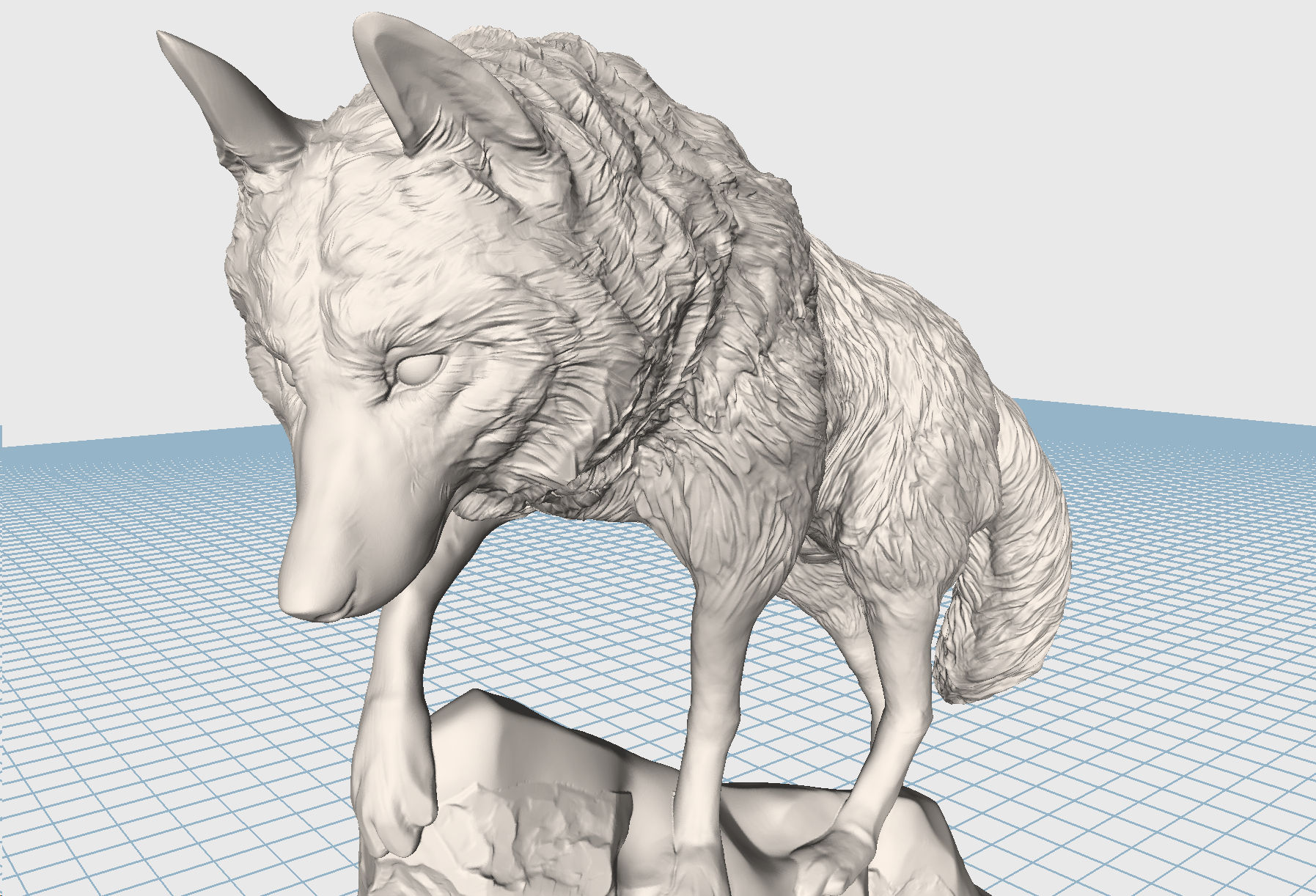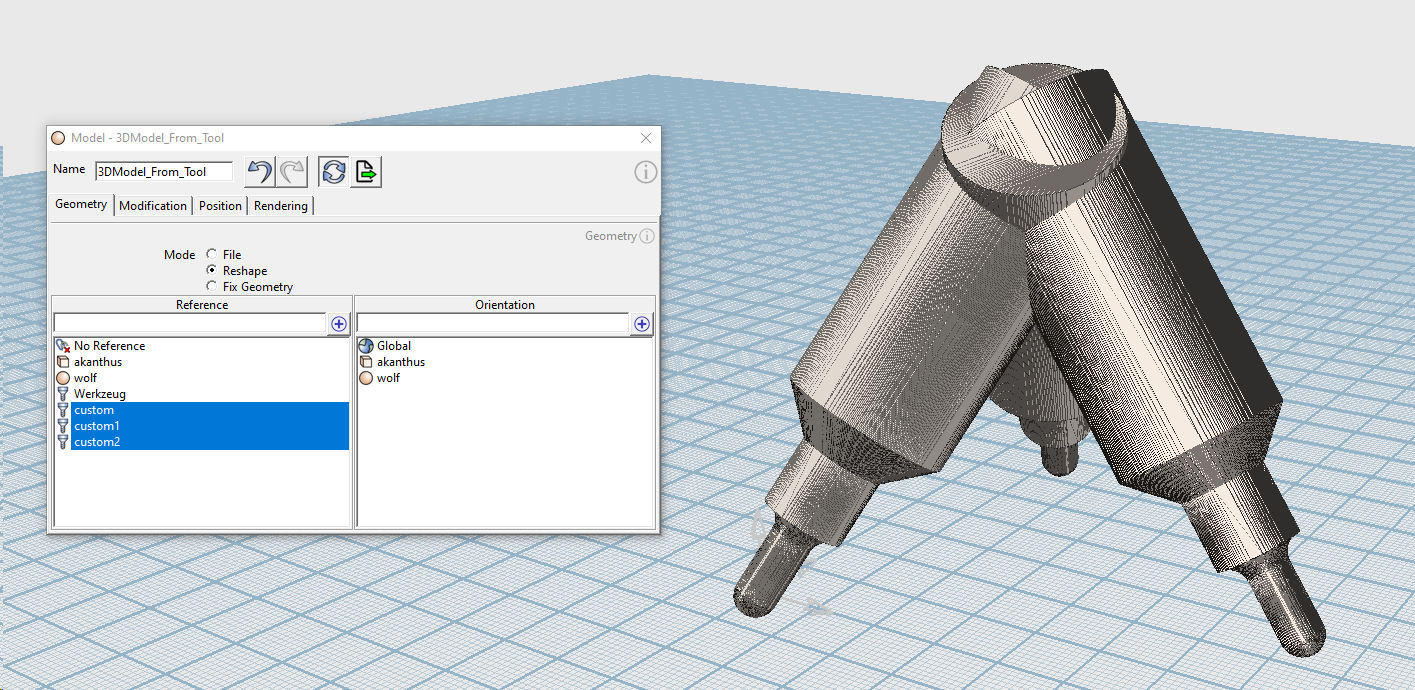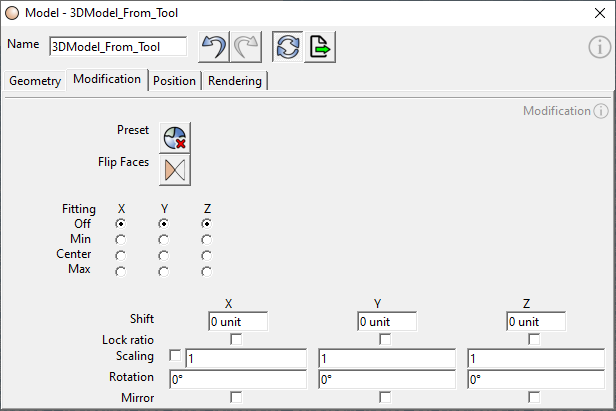3D model <PRO>
send2cnc supports 3D models in stl format. This means that the 3D geometry is composed of a large number of small triangular faces.
 © send2cnc.com
© send2cnc.comThanks to a special procedure, even models with millions of facets are no problem. This means that even "high poly models" and 3D scans with an extremely high level of detail can be processed without difficulty.
Geometry mode
A 3D model can be created, loaded or generated using a variety of methods.File
The 3D model is created from an imported STL file.Import 3D model
Opens the file manager to import a 3D file.Reload 3D model data
Reloads the already imported file from the saved file path and updates the 3D model.
Unlink File Path
This tool removes the linked file path from the object, but retains the data of the last loaded file.
Reshape
The 3D model is formed from one or more existing models.
 © send2cnc.com
© send2cnc.comNote
In this mode, the position and orientation of the object are determined by the selected references and cannot be changed directly. To edit the position, the geometry created from the references can be fixed using the "Freeze geometry" mode.
Tip
Mold models can also be converted into a 3D model.
Geometry reference
One or more models can be selected to be merged into a single 3D model.
Orientation
The orientation of the resulting 3D model is aligned with the selected reference. The position and orientation of the model are determined by the selected reference.
Special references
Special references can also be used and are described in the general chapter for reference lists
Freeze Geometry
Detaches the model from its geometry and position references.
Activating the "Freeze Geometry" mode freezes the geometry and position of the model. The dependency on geometry and position references is removed, making the model independent and allowing it to be freely positioned.
Lock geometry data
Locks the geometry data of a 3D model to protect the data from unauthorised export.
If a lock is set, it cannot be removed again. A model with locked geometry data cannot be exported, and the geometry mode cannot be changed either. Furthermore, it cannot be selected as a geometry reference by another 3D model. Nevertheless, it is possible to apply a transformation to a locked geometry, and the object can still be freely positioned.
3D Model Modifications
The modifications affect the 3D shape and the model origin.
This function group allows you to adjust the shape, size and internal model position (model origin) of the model without affecting its global position in 3D space. To place the model in the scene, the "Position" tab should be used.
A frequently used transformation is scaling the 3D model to bring it to a certain dimension.
 © send2cnc.com
© send2cnc.comPresets
The presets can be used to set or reset standardized modification values.
Reset Mods
Resets the modifications to their default values.
Modifications
Flip Faces
Invert the surfaces of the 3D model.
This function can be useful if an imported model has surface normals pointing in the opposite direction, causing the inside to be displayed instead of the outside. Flipping the surfaces changes the orientation of the normals so that the inside of the surfaces points outwards and vice versa. This function only has an optical effect and does not affect the geometry of the model.
Fitting
Adjusts the origin of the 3D model individually along the X-, Y- and Z-axes, based on the size of the model geometry.For each axis, there are four options for setting the origin: Off, Min, Center, and Max.
- Off: No change to the model origin.
- Min: Sets the model origin to the position of the minimum extent of the geometry along the axis.
- Center: Positions the model origin at the center of the geometry along the axis.
- Max: Sets the model origin to the position of the maximum expansion of the geometry along the axis.
This function allows you to precisely adjust the origin of the model, for example, to align it on a specific plane or axis, depending on the size and extent of the model geometry. The "Move" function is disabled for the respective axis when the origin of the model is set using "Fit".
Shift
Shifts the origin of the model in the X, Y, and Z axes.
Lock Aspect Ratio
Locks the scale ratio for the X, Y, and Z axes to maintain the proportions of the model.
Scaling
Scales the 3D model to the desired size. The scaling mode can be toggled between "Scaling factor" and "Absolute scaling" using the checkbox.
Rotation
Rotates the 3D model by the specified number of degrees around the X-, Y- and Z-axis.
Mirror
Mirrors the geometry along the specified axis.